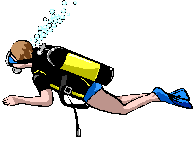Nate Johnson Takes the Plunge
By Norman Schreiber
It wasn’t just that he got the chance to make pictures of Sharon Stone, Dustin Hoffman, Samuel L. Jackson, Liev Schreiber, Peter Coyote and Queen Latifah that caused Nate Johnson to immerse himself in his work. It was the water -- thousands of gallons of water, five colossal tanks of water. Johnson worked as still photographer for upcoming motion picture Sphere. The movie, a sci-fi thriller, is about a government-sponsored team that goes into the deep (1,000 ft. below) to investigate a ‘space ship.”
. Barry Levinson directed Sphere and Warner Brothers will release the film around Christmas

The producers wanted underwater reality minus the uncontrollability of shooting in a genuine glug-glug location. The five tanks simulated the various underwater habitats and were the film’s second unit sets. (The first unit crew shot interior scenes in hangers on the surface and Brian Hamill was the still photographer for those sequences.)
Johnson had one simple guideline: photograph everything until the camera started rolling and then get the heck out of the way of the camera and actors. He couldn’t just crouch behind a faux rock, as his bubbles would give him away. And the rush hour traffic could be murder.
“Five actors could be in the water,” said the photographer. Each
actor had two safety divers. There was the master safety diver, the
camera crew, and maybe 10 grips. Sometimes 23 people were in the pool
and we started bumping into each other. “
Johnson took to the gig like —well—like a duck to water. The 34-year-old
Emoryville (Calif.) photographer has 17 years of diving experience.
“I started taking pictures when I was a kid,” said Johnson. “Underwater photography started when I was 17 after I met Al Geddings. He came into a Berkeley dive shop where I was working. Al just came out with a book with National Geographic. I saw it and thought it would be fantastic to work underwater and see things that others can’t see. Every time you go diving you’re an explorer. It’s a new experience. I don’t know any place on the surface to have that feeling.”
Carrying 60-100 pounds of camera equipment (including a weighted tripod) while emerging from the water was hard. Also challenging was the lighting. Not surprisingly, each film scene was lit, according to Sphere director of photography Adam Greenberg’s specifications. So, essentially Johnson was shooting underwater with available light. Johnson also found shooting the cameramen tricky. (“They were never lit. I had to wait until they swam into light or until they were silhouetted.”)
He often had only a 10 or 15 minute stretch before filming began. The underwater silence made it difficult to communicate with the actors. Johnson turned to a special piece of equipment – a rubber fish.
“I waved it and squeezed it,” said Johnson. “It had a ‘look at the birdie’ quality and it worked .I got their attentions.“
Johnson’s gig worked well as a career boost. Warner Brothers is pleased with his work and he’s joined the Hollywood still photographers union. And he had a great time.
“When I came home Fridays,” said Johnson, “I couldn’t wait to get
back to work.”